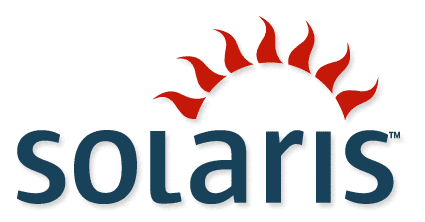 |
| [Solaris Logo, courtesy former Sun Microsystems] |
Solaris and Virtualization: KVM and Xen
Abstract:
Solaris Intel looked to be a worthy operating system for the Intel marketspace with key technolgy such as ZFS, DTrace, Containers, and Xen. With Oracle's killing of Xen for Solaris 11 Intel, many were concerned that the benefits of Solaris on a server would be lost, without platform virtualization such as Xen. The Open Source Solaris community decided to invest in another technology, bringing true managed services scalability to the internet cloud environment.
What is KVM:
KVM is the traditional acronym for "Keyboard, Video, Mouse" - as in KVM Switch. Unfortunately, some not-so-genius decided to overload the multi-decade old acronym with a new moniker - "Kernel Virtual Machine." The QEMU emulator is used as the foundation for the virtual machine. KVM was implemented to be tightly tied to the Linux kernel, with little attempt to be open and friendly to other system kernels, as was Xen.
Cloud Computing: Joyent
Joyent moved KVM to the cloud with Solaris on their managed services grade SmartOS - encapsulating the finest of today's OS technologies: Zones, ZFS, DTrace, Crossbow. The use of KVM and QEMU within a Solaris Zone securely protects the hypervisor from virtual machine hacking exploits, which would ordinarily result in a disaster under Linux. The use of Crossbow provide for securiy and capping of network resources, through the underlying Solaris OS Kernel, to contain network exploits in the guest operating systems and/or their applicaions. Solaris DTrace provides unprecendeted KVM and guest operating system visibility - which includes cloud analytics from the hypervisor, operating system, middleware, and all the way down to the application layers.
Solaris Intel looked to be a worthy operating system for the Intel marketspace with key technolgy such as ZFS, DTrace, Containers, and Xen. With Oracle's killing of Xen for Solaris 11 Intel, many were concerned that the benefits of Solaris on a server would be lost, without platform virtualization such as Xen. The Open Source Solaris community decided to invest in another technology, bringing true managed services scalability to the internet cloud environment.
 |
| [kvm logo, courtesy linux-kvm.org] |
KVM is the traditional acronym for "Keyboard, Video, Mouse" - as in KVM Switch. Unfortunately, some not-so-genius decided to overload the multi-decade old acronym with a new moniker - "Kernel Virtual Machine." The QEMU emulator is used as the foundation for the virtual machine. KVM was implemented to be tightly tied to the Linux kernel, with little attempt to be open and friendly to other system kernels, as was Xen.
 |
| [Joyent logo, courtesy joyent.com] |
Joyent moved KVM to the cloud with Solaris on their managed services grade SmartOS - encapsulating the finest of today's OS technologies: Zones, ZFS, DTrace, Crossbow. The use of KVM and QEMU within a Solaris Zone securely protects the hypervisor from virtual machine hacking exploits, which would ordinarily result in a disaster under Linux. The use of Crossbow provide for securiy and capping of network resources, through the underlying Solaris OS Kernel, to contain network exploits in the guest operating systems and/or their applicaions. Solaris DTrace provides unprecendeted KVM and guest operating system visibility - which includes cloud analytics from the hypervisor, operating system, middleware, and all the way down to the application layers.
Experiences porting KVM to SmartOS from bcantrill
The porting of KVM to be encapsulated in a Solaris Zone within SmartOS was genius.
The porting of KVM to be encapsulated in a Solaris Zone within SmartOS was genius.
The death of Xen under Solaris at the hands of Oracle was an untimely demise for a great concept - robust cloud computing could have been owned by Solaris, making others vendors look like a cheap knock-offs. While Oracle may have marketed Solaris 11 as the operating system of cloud computing, the real innovation came from Joyent, who implemented a multi-vendor cloud on top of managed services grade OpenSolaris fork, through the port of highly proprietary (operating system specific) KVM. Kudos to SmartOS team! Will HP, IBM, or Dell purchase Joyent for their SmartOS?

No comments:
Post a Comment